Creating an Event with Photobooth Mode GIF
Step 1: Mode Settings
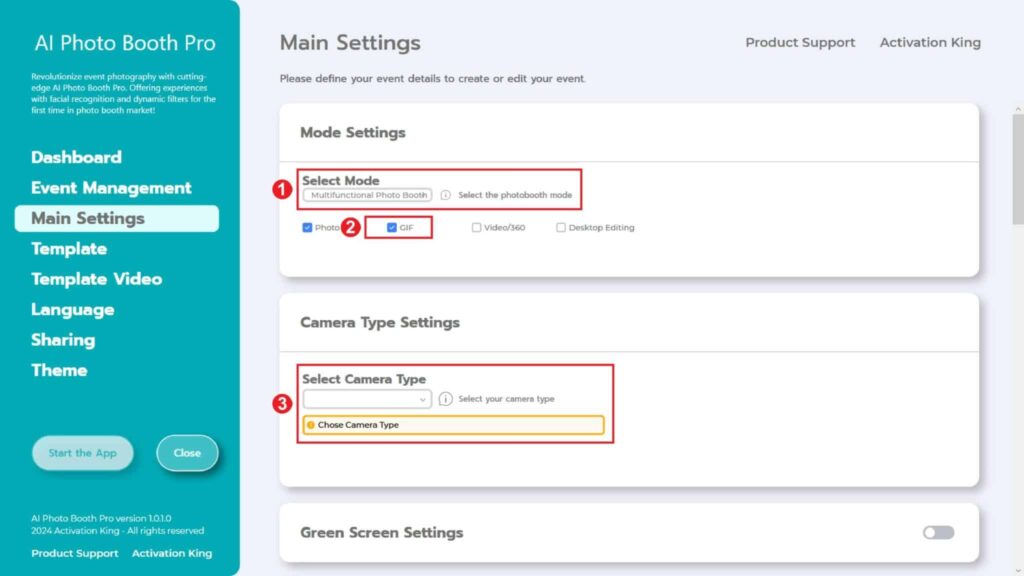
We select the “Multifunctional Mode.” After making the selection, we check the “Photo and GIF” option from the options below.
Step 2: Camera Type Settings

In the “Camera Type Settings” section, we select the type of camera we want to use from the dropdown menu in the “Select Camera Type” box. When you connect your camera to your computer, it should appear in the dropdown menu in the “Select Camera” box. (If it doesn’t appear, make sure your camera is on and connected to your computer, then try again.) After selecting your camera, you can adjust the orientation (horizontal or vertical) in the “Camera Rotation” section according to your usage.
Step 3: Camera Settings
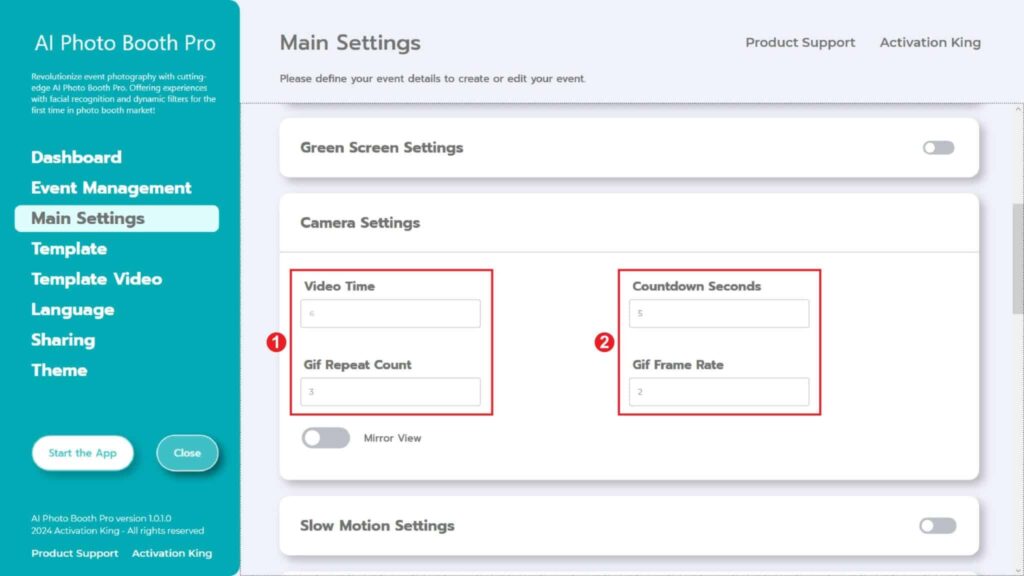
In the “Camera Settings” section, the “Countdown Seconds” part displays the time you have after giving the command to take a photo to see yourself on the screen and adjust your pose. In short, you can adjust your photo timer in this section.
In the “Gif Repeat Count” section, you can adjust the video length of your GIF, while in the “Gif Frame Rate” section, you can determine the frame rate.
Step 4: Template
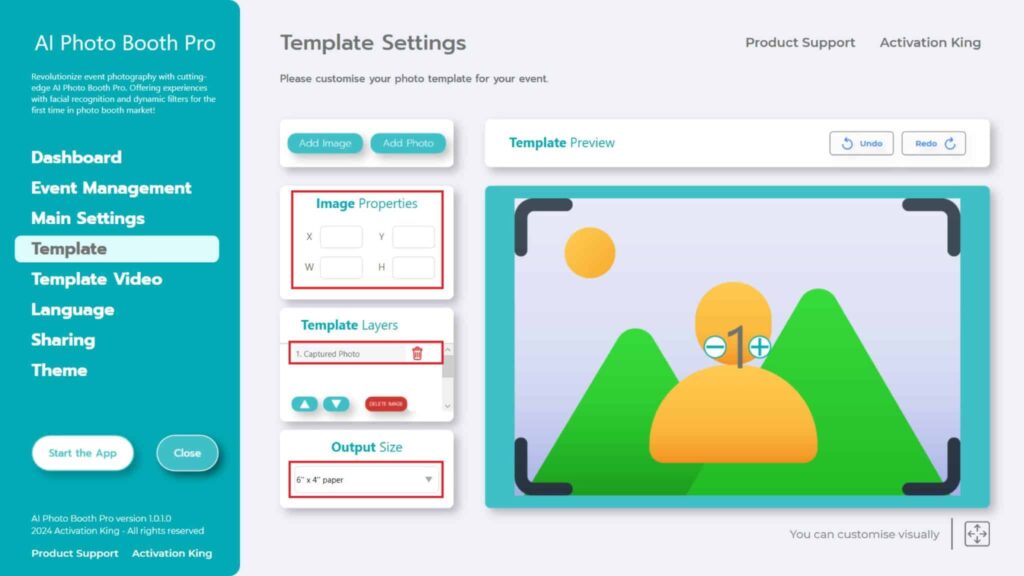
The “Template Settings” section is where we adjust the number, dimensions, and positions of the photos we take, and where we add digital frames and stickers.
In the “Output Size” section, you can set the dimensions of your photo. If you’re going to print it, we recommend entering the dimensions of your printing paper, either 6×4 or 6×8. If you’re only doing digital work, you can also consider other options like 1280×1280, 1080×1920, or 1280×720.
For our GIF request, we need to take multiple photos. Therefore, to add photos, we press the “Add Photo” section.
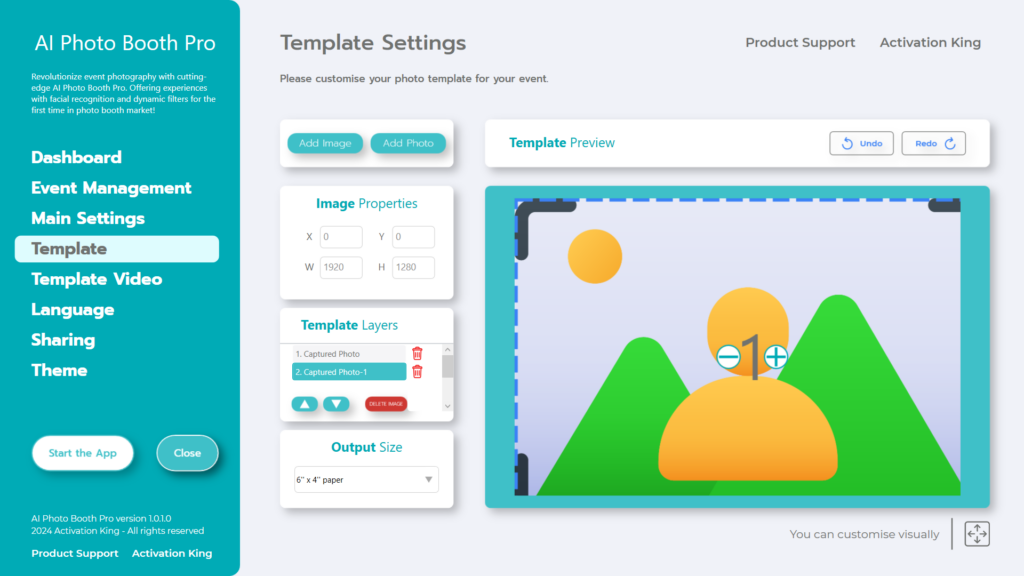
If you’ve noticed the “Template Layers” section, you’ll see that another image has been added. Add as many photos as the number of frames you want to capture.

Let’s say we’re going to take 4 square photos. After adding 4 square photos to the “Template Layers” section, click once on each “Captured Photo” and scale it using the “Image Properties” section. (If you’re going to add a frame, scale your image based on the frame dimensions to ensure the frame doesn’t cover your image.)
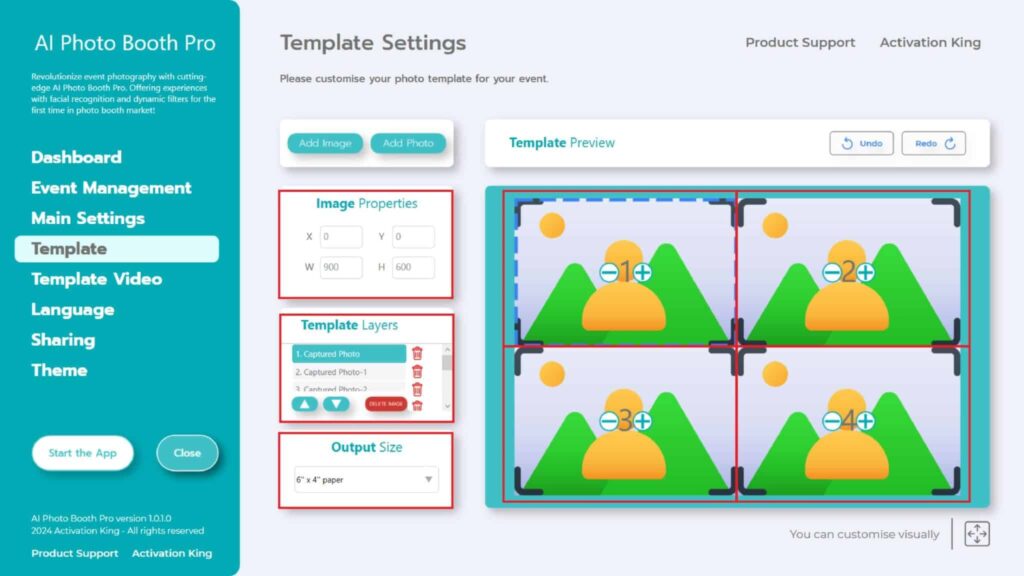
After scaling, number each image by pressing the “+” sign on the numbers located on the images, labeling them as 1, 2, 3, 4. Having the same number on different images indicates that they display the same picture. Therefore, numbering is crucial.
To add digital frames and stickers onto your photos, press the “Add Image” section located above.

In this section, select the horizontal or vertical frame you want to use and click “open.”

If the frame you added matches your “Output Size” dimensions, it will automatically fit. If it’s a different size, click once on the frame in the “Template Layers” section. Enter the “Output Size” dimensions in the “Image Properties” section and ensure that the frame fits perfectly on the image.
Step 5: Template Video
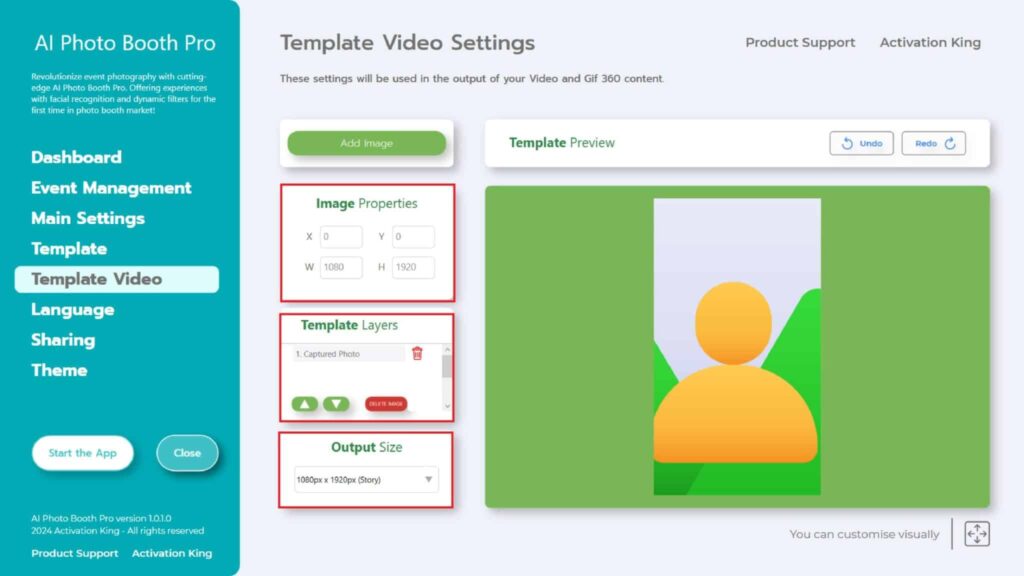
The “Template Video Settings” section is where we adjust the dimensions and positions of our GIF, and where we add digital frames and stickers. One important thing to note is that the “Output Size” in “Template Video Settings” should match the “Output Size” in “Template Settings.” Otherwise, your GIF may get cropped when creating it.
After ensuring that the “Output Size” dimensions are the same, if you want to add a frame to your GIF, press the “Add Image” section.”

In this section, select the horizontal or vertical frame you want to use and click “open.”
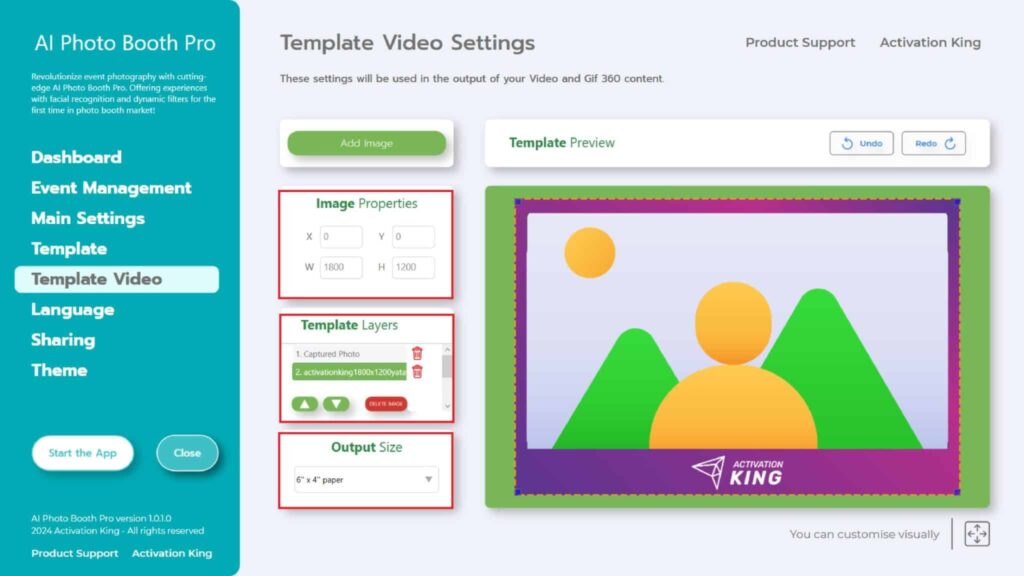
After adding your frame, if it doesn’t fit properly, click once on the frame in the “Template Layers” section. Enter the “Output Size” dimensions in the “Image Properties” section and make sure the frame fits perfectly on the image.
Once you’ve completed all these steps, press the “Start the Apps” button.
Step 6: Start the Apps
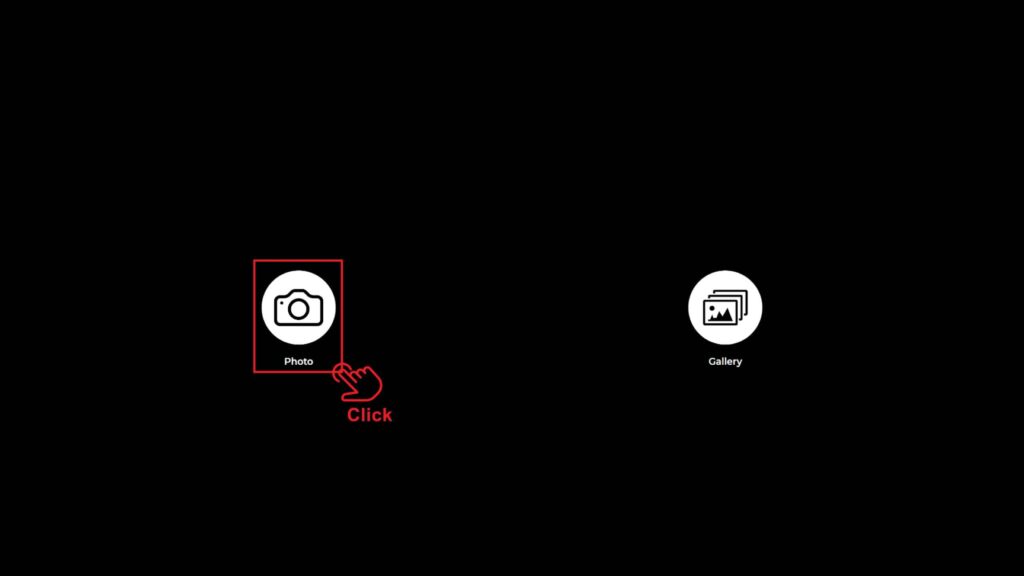
When we enter the “Start the Apps” section, we’ll be greeted with this screen. I click once on the “Photo” icon.
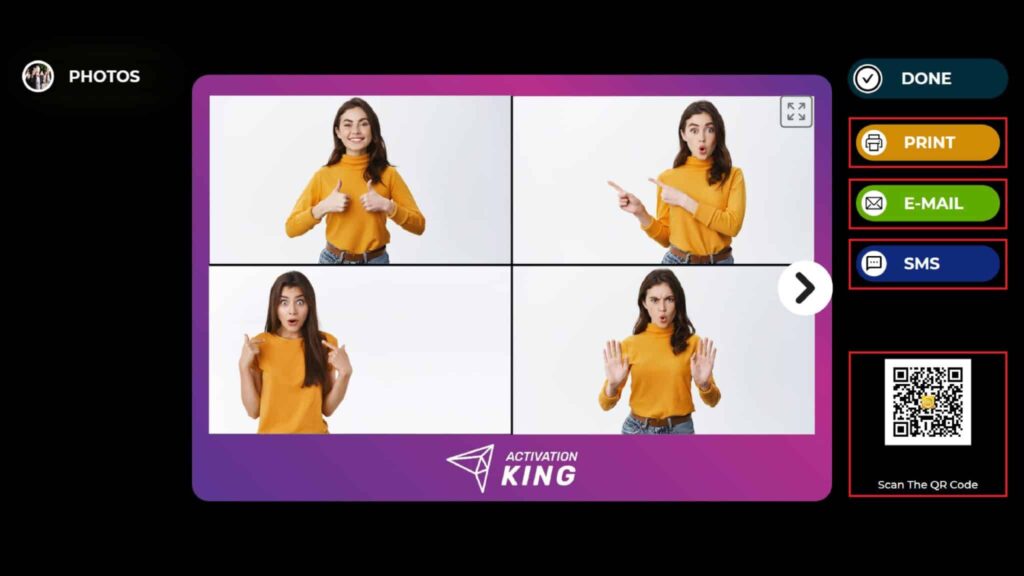
After taking the photo, your image with the added frame will appear.

You can open the GIF page by clicking on the “Ok” icon on our image.
On the right-hand side, you can print, email, send via sms, or receive by scanning a QR code. You don’t need to scan separate emails or QR codes for both the photo and GIF. Both will be available on “activationshare.com.”
To return to the capture screen, press the “DONE” icon.
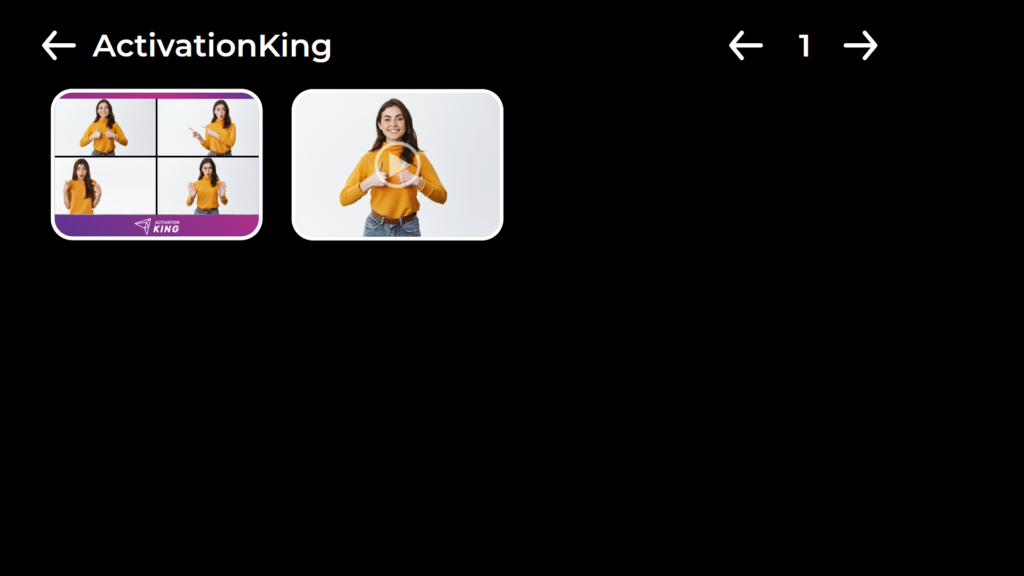
When you press the “Gallery” icon, you access the images you have previously taken.
To return to the “Settings Menu,” press the “F11” key, or for users with a touchscreen, simply tap five times consecutively on the upper right corner.
